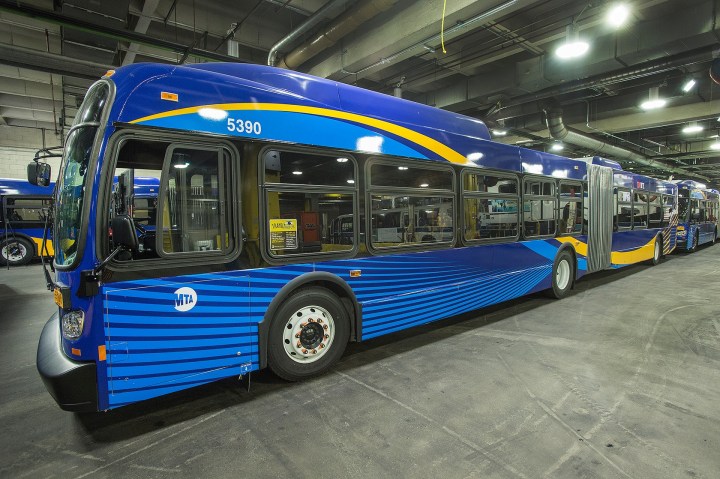
If you look up the definition of a love/hate relationship, you’ll likely find a picture of New Yorkers and the city’s public transportation system. While the MTA is a way of life for most city dwellers, this dependency certainly isn’t without its qualms, especially because of the tragic fact that pedestrians keep getting hit by buses. And as pleased as New Yorkers may be about the recently unveiled fleet of tech-forward city buses, they can take even more pride in advances being pursued by the MTA at a very basic level — keeping people safe.
According to an estimate from the Amalgamated Transit Union, city buses cause about one pedestrian death every 10 days across the country, with many pointing to blind spots as the culprit for these tragedies. The Associated Press reports that bus operators have noted the unstrategic placement of large side mirrors and buses’ “thick pillar frames” as potential hazards as well. So as great as on-board Wi-Fi and USB charging ports may be, they don’t do much to address the life-threatening issues at hand.
“Amenities like Wi-Fi are welcome, and they certainly add to the experience of riding the bus, but the first priority should be on improvements to buses that save lives,” said Paul Steely White, executive director of the Transportation Alternatives advocacy group.
And improvements are in the works. Last year, the MTA announced plans to test two new safety technologies — a pedestrian turn warning system and a collision avoidance system.
The former would involve speakers that broadcast information to pedestrians, cyclists, and other drivers about upcoming bus turns. The volume would also self-adjust based upon environmental noise levels. As for the collision system, sensors would warn drivers with both visual and audio alerts in the case of an imminent forward or side crash.
Currently, 60 buses are being tested with these features, and the hope is that 300 total buses will experience the systems by the end of the year. According to the MTA, the widespread implementation of this technology would cost nearly $80 million — $20 million for the pedestrian warning system and $57 million for the collision avoidance system.
“Testing these systems is part of our ongoing commitment to improving the safety of our customers, pedestrians, and bicyclists,” said MTA spokesman Kevin Ortiz. “These tests will take this commercially available technology and hopefully show that we can put it to practical use on a larger scale under New York City operating conditions.”
So far, no buses in New York City have been implicated with pedestrian deaths this year, a trend that Mayor Bill de Blasio hopes to maintain.
Editors' Recommendations
- Watch this incredible drone fly-through of Man City’s Etihad Stadium
- Hacker tries to poison the water supply of a Florida city
- Drone deliveries may consume 10 times as much energy as van deliveries in cities
- Apple releases mobility data to show if people are social distancing
- New York City orders all entertainment venues to close starting March 17


